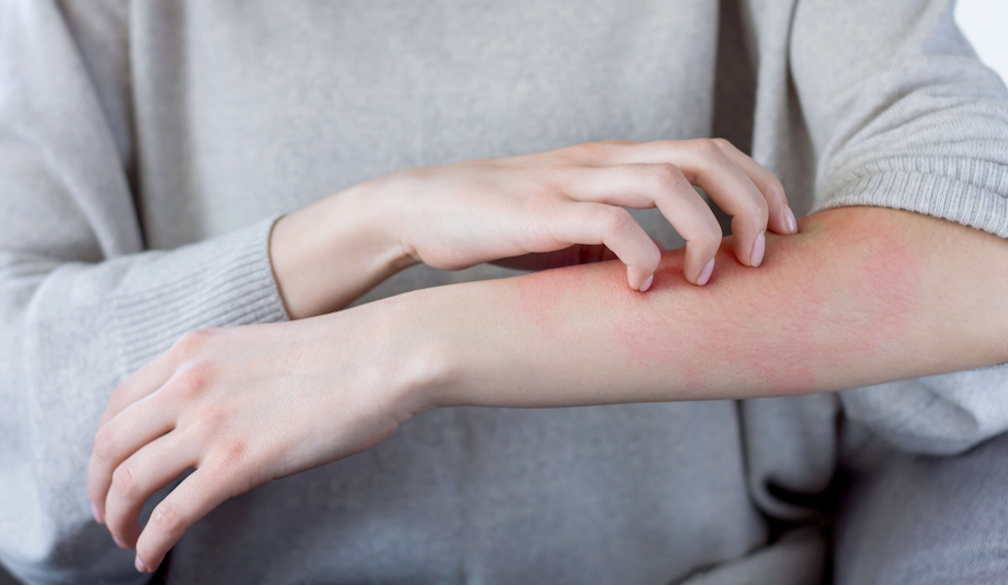Eczema, Psoriasis, or Allergy? How to Tell the Difference

Red, itchy, or inflamed skin can be frustrating and confusing, especially when symptoms seem to overlap between eczema, psoriasis, and allergies. Although these conditions may appear similar, they differ significantly in their causes, appearance, and treatment. Knowing how to distinguish one from another helps prevent mistreatment and unnecessary discomfort. This guide explores how each condition looks, what triggers them, and when it’s time to consult a good dermatologist in Singapore for proper evaluation and relief.
Visual Characteristics and Patterns
Eczema Appearance
Atopic dermatitis presents as red, inflamed patches with indistinct borders that blend into surrounding skin. The affected areas feel rough and may develop tiny fluid-filled vesicles during acute flares. Chronic eczema leads to lichenification - thickened, leathery skin with exaggerated skin markings from repeated scratching.
In infants, eczema typically affects the cheeks, scalp, and extensor surfaces. Children develop lesions in the antecubital and popliteal fossae (inner elbows and behind knees), wrists, and ankles. Adults experience more widespread distribution, including hands, feet, and eyelids. The "itch-scratch cycle" creates secondary changes including excoriations, hyperpigmentation, and secondary bacterial infections presenting as honey-crusted lesions.
Eczema lesions change appearance throughout the day. Morning lesions appear less inflamed after overnight rest, while evening flares intensify from daily activities, heat exposure, and accumulated irritants. Sweating, hot showers, and wool clothing trigger immediate redness and itching.
Psoriasis Presentation
Psoriatic plaques form well-demarcated, raised patches covered with silvery-white scales. Removing these scales reveals pinpoint bleeding spots (Auspitz sign) - a diagnostic feature absent in eczema or allergies. The plaques maintain consistent thickness and sharp borders, creating a distinct contrast with normal skin.
Scalp psoriasis produces thick scaling beyond the hairline, differentiating it from seborrheic dermatitis. Nail involvement occurs frequently, causing pitting, oil spots, onycholysis (nail separation), and subungual hyperkeratosis. Inverse psoriasis affects intertriginous areas (skin folds) but lacks typical scaling due to moisture and friction.
Guttate psoriasis presents differently - numerous small, drop-shaped lesions scattered across the trunk and limbs, often following streptococcal throat infections. Pustular psoriasis forms sterile pustules on palms and soles or generalized distribution during severe flares. Erythrodermic psoriasis causes widespread redness and scaling, requiring medical attention.
Allergic Reaction Patterns
Contact dermatitis creates geometric patterns matching the allergen exposure site - watchband shapes from nickel allergy, streaky lines from plant oils, or shoe-shaped distributions from rubber accelerators. The reaction remains confined to contact areas initially, developing clear demarcation lines.
Urticaria (hives) produces raised, blanching wheals that migrate and change shape within hours. Individual lesions last less than 24 hours, though new ones continuously form during active reactions. Angioedema causes deeper swelling in lips, eyelids, hands, and sometimes airways, requiring emergency evaluation.
Drug eruptions present various patterns - morbilliform (measles-like) rashes starting on the trunk, fixed drug eruptions recurring at identical sites, or Stevens-Johnson syndrome with targetoid lesions and mucosal involvement. Photo-allergic reactions affect sun-exposed areas while sparing covered regions, creating sharp clothing-line demarcation.
Timing and Triggers
Eczema flares follow environmental and emotional stressors. Cold, dry weather, harsh soaps, sweat, and anxiety all worsen symptoms. Flare-ups occur during exam seasons, winter months, or after new skincare product use. Patients often recall childhood atopy - hay fever, asthma, or food allergies - in family history.
Psoriasis follows a chronic course with stable plaques persisting for months. Stress, infections, alcohol, smoking, and certain medications like beta-blockers or lithium may trigger or worsen psoriasis. Unlike eczema, psoriasis does not correlate with seasonal dryness or contact irritants. Some patients report improvement with sunlight exposure due to ultraviolet immunomodulation.
Allergic reactions appear acutely within hours of exposure to allergens or drugs and resolve once the trigger is removed. Recurrence occurs only upon re-exposure. In contact dermatitis, the first episode may appear days after contact, but subsequent exposures cause faster and stronger reactions.
Distribution and Localization
Eczema tends to affect flexural surfaces - inner elbows, behind knees, and wrists. Psoriasis favors extensor surfaces - elbows, knees, and scalp. Allergic contact dermatitis corresponds exactly to the contact zone. For instance, hair dye allergies affect the scalp margin and neck, while nickel allergies appear beneath jewelry or belt buckles.
Hand eczema from repeated washing differs from psoriatic hand lesions by their ill-defined edges and fissures. Scalp psoriasis spreads beyond hair margins, while seborrheic dermatitis stays within them. Psoriasis on nails (pitting, oil spots) differs from fungal infections, which thicken nails and cause yellow discoloration.
Itch and Sensation Differences
Eczema produces intense itching that worsens at night, disrupting sleep. Scratching temporarily relieves itch but perpetuates inflammation. Psoriasis may cause mild itching or burning, but pain and tightness from scaling dominate. Allergic hives produce sudden, severe itching with transient swelling but no scaling or chronic thickening.
Diagnostic Clues and Investigations
Diagnosis often begins with visual examination and patient history. For eczema, patch testing identifies contact allergens like nickel, fragrance, or preservatives. Psoriasis diagnosis relies on clinical appearance, but biopsy confirms epidermal hyperplasia and Munro microabscesses. Allergic urticaria requires exclusion of systemic causes like food, drugs, or autoimmune disorders.
Blood tests may show elevated IgE in eczema patients, while psoriasis often correlates with systemic inflammation (elevated CRP). Dermatologists may use dermoscopy to identify characteristic vascular and scaling patterns. Allergy testing differentiates between immediate (Type I) and delayed (Type IV) hypersensitivity reactions.
Treatment Approaches
Eczema management focuses on restoring the skin barrier and reducing inflammation. Daily emollients, gentle cleansers, and short lukewarm baths minimize irritation. Topical corticosteroids or calcineurin inhibitors treat active flares. In severe or chronic cases, phototherapy or biologic agents targeting IL-4 or IL-13 pathways may be prescribed.
Psoriasis therapy targets immune overactivity. Topical vitamin D analogues, corticosteroids, or coal tar preparations treat localized disease. Extensive psoriasis requires phototherapy or systemic agents like methotrexate, cyclosporine, or biologics that inhibit TNF-alpha, IL-17, or IL-23. Lifestyle modification, weight control, and stress management improve outcomes.
Allergic reactions require identification and avoidance of triggers. Topical corticosteroids relieve contact dermatitis, while oral antihistamines manage urticaria. Severe drug allergies or angioedema may need corticosteroids or epinephrine. Desensitization therapy helps chronic allergic conditions.
When to Seek Professional Help
Persistent or unclear rashes should prompt consultation with a dermatologist. Eczema unresponsive to moisturizers, psoriasis affecting more than 10% of the body surface, or allergies causing swelling or blistering all warrant medical evaluation. Early diagnosis prevents complications such as infection, scarring, and emotional distress.









